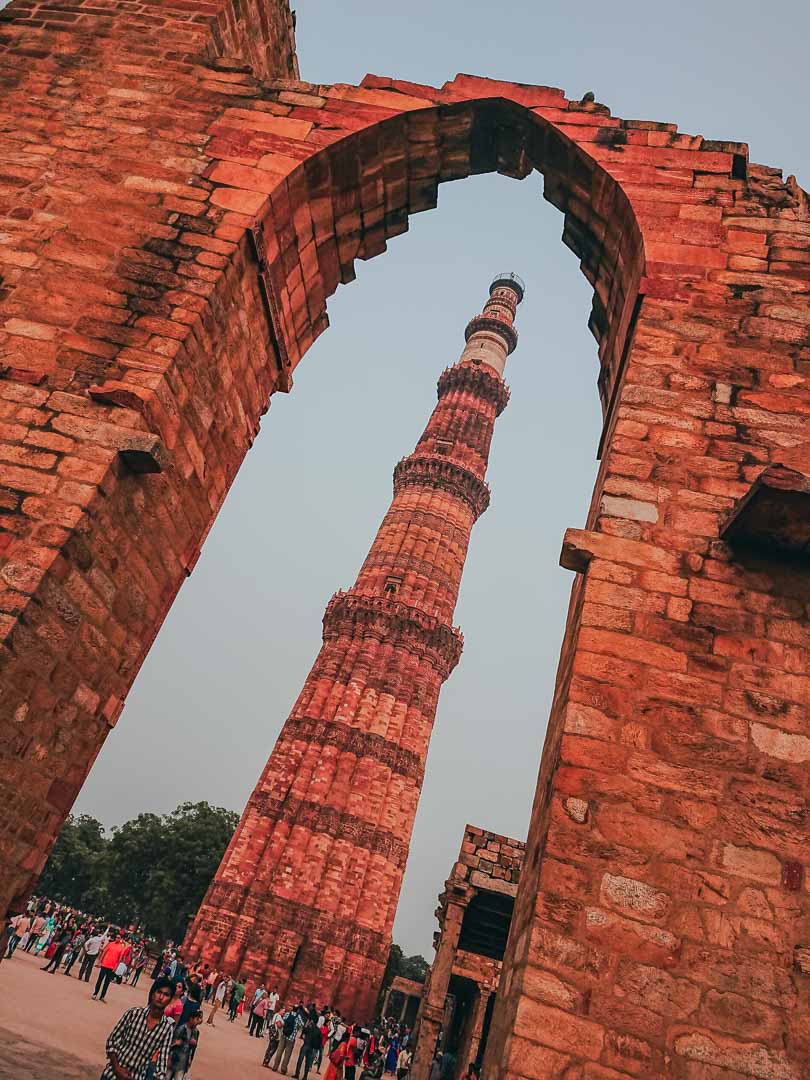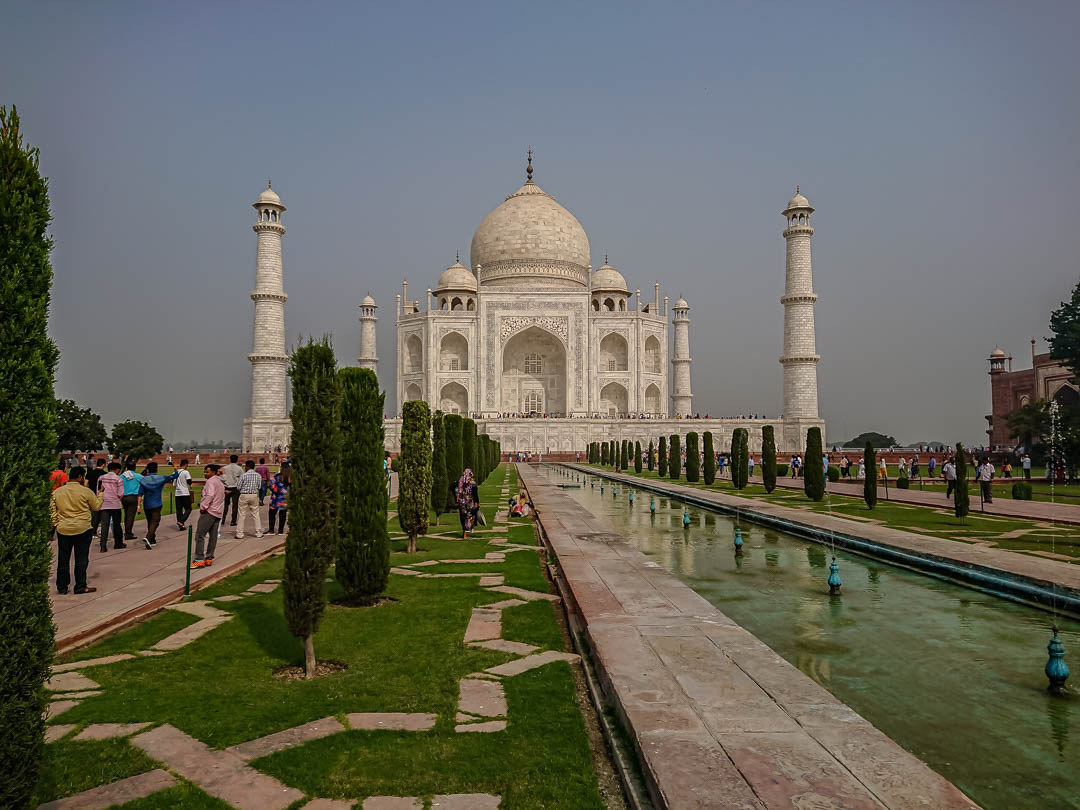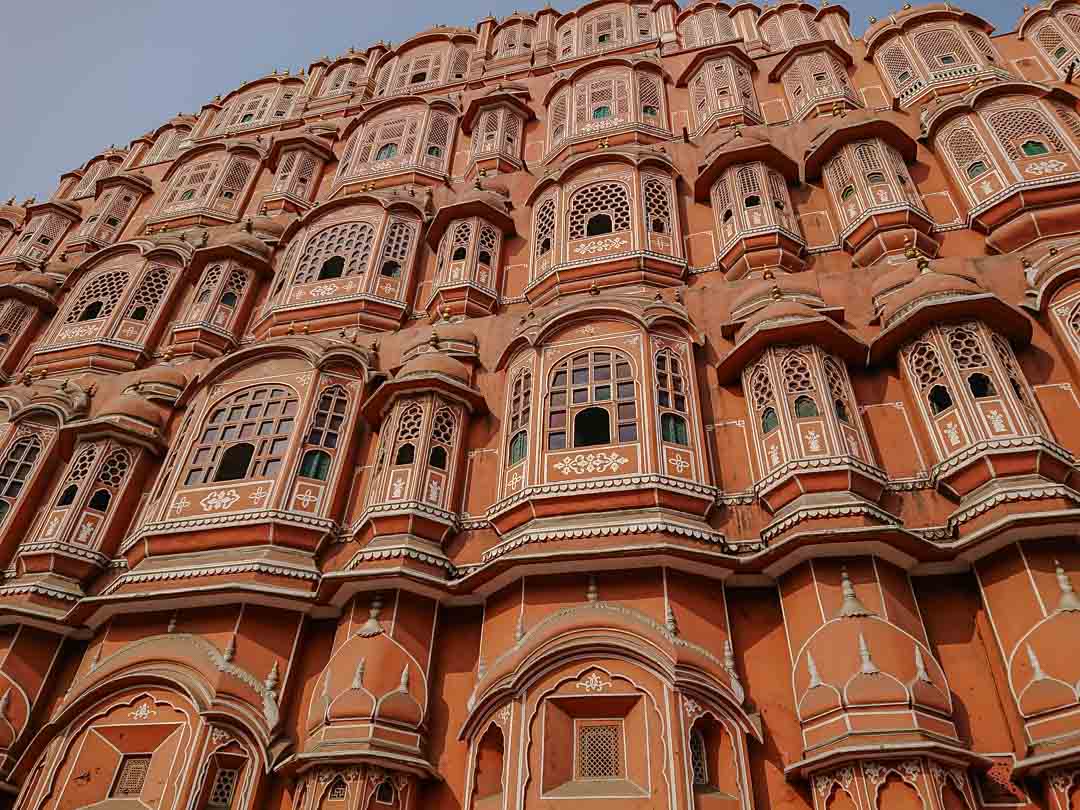India
India is a bustling land with a rich history, different cultures, breathtaking scenery, and unforgettable experiences around every corner.
🔸 Rajghat Memorial 🔸
Honors Mahatma Gandhi’s Legacy Of Peace and Non-Violence Struggle For Independence
DISCOVER
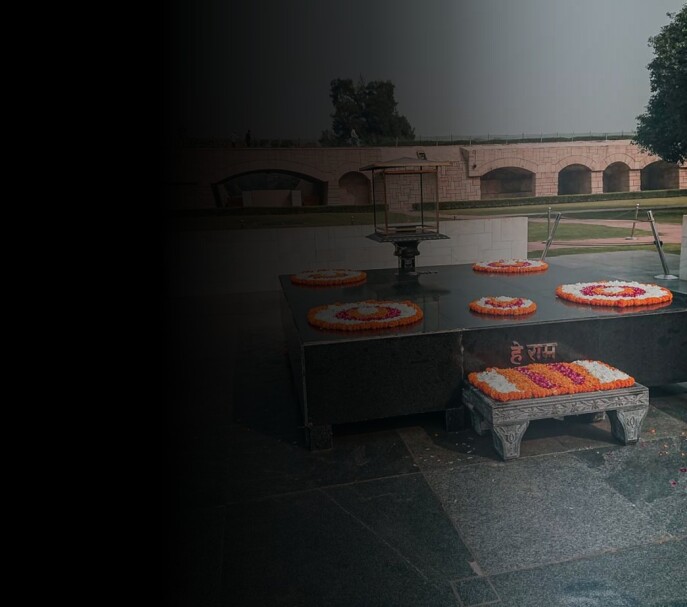
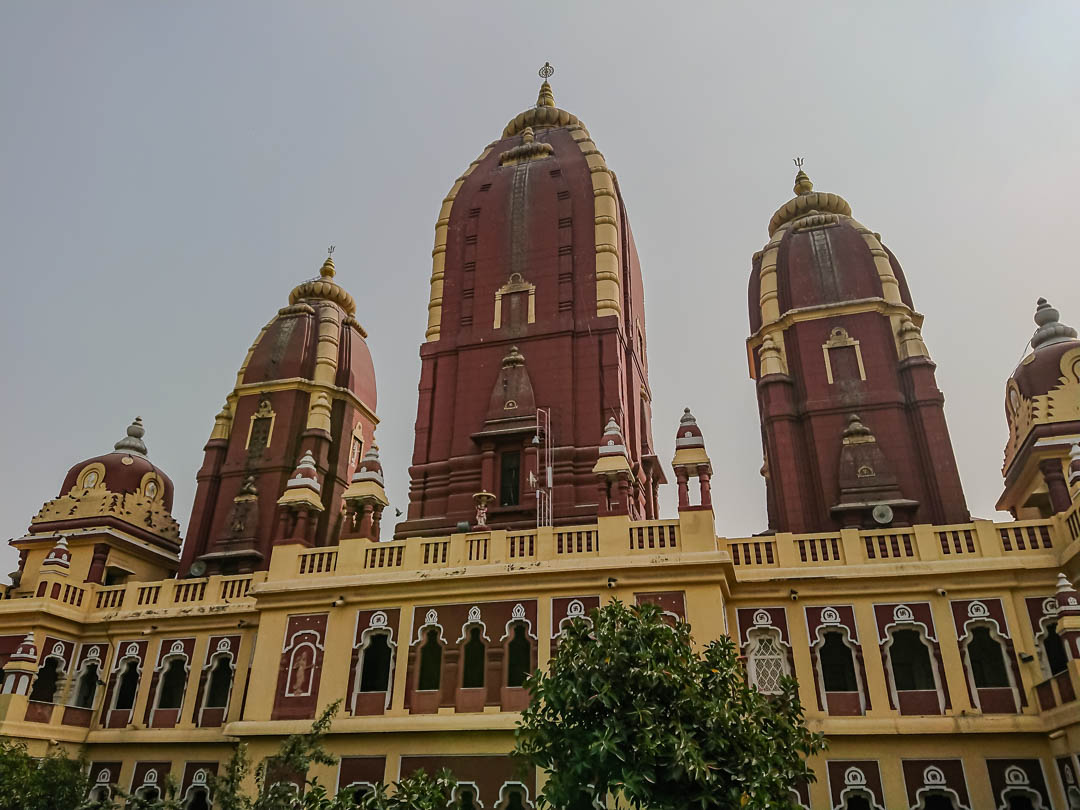
Shri Laxmi Narayan Temple
A Spiritual Oasis in New Delhi
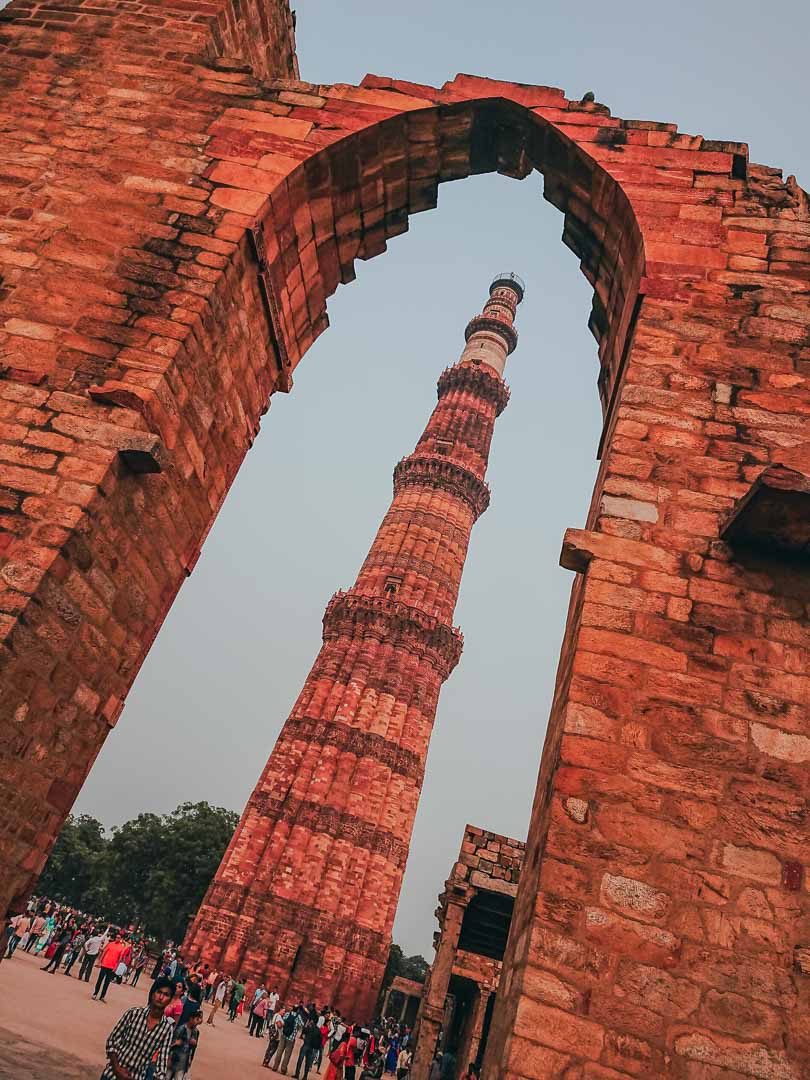
Qutub Minar
A Towering Testament to History and Heritage
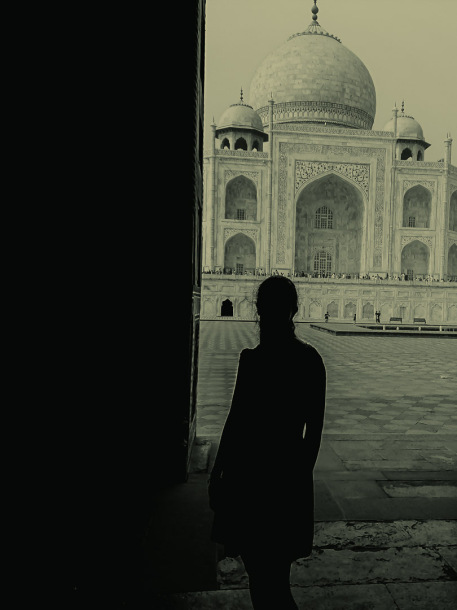
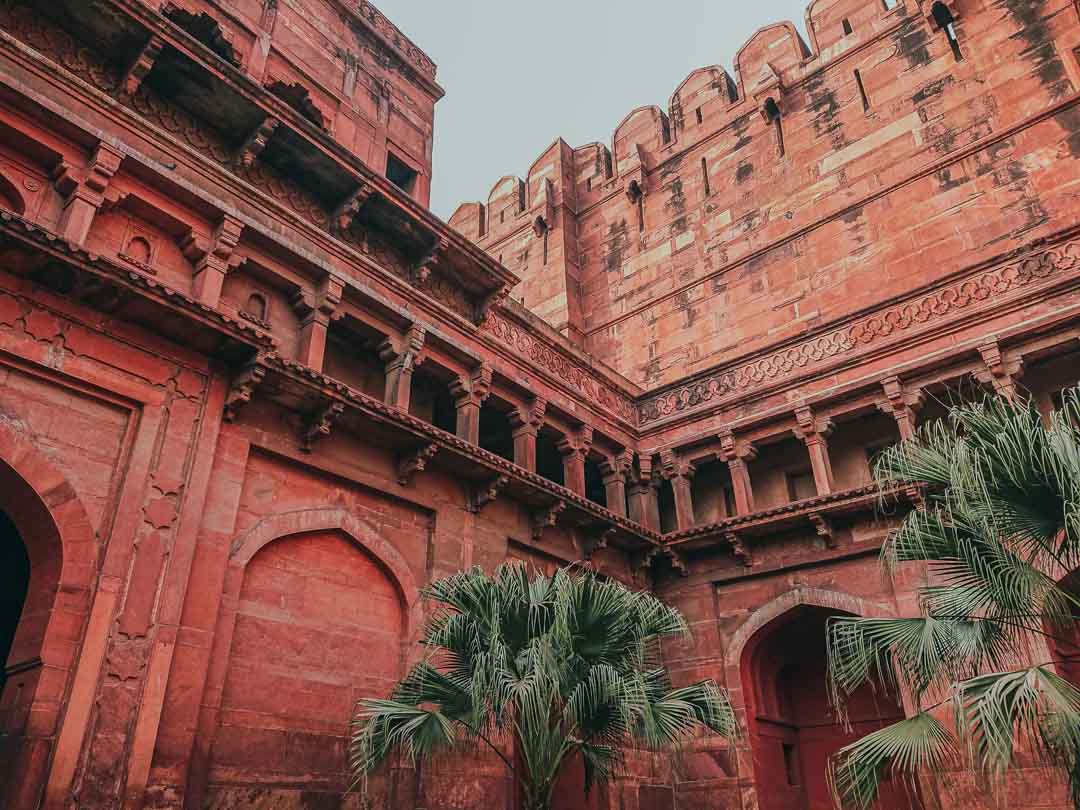
Agra Fort
A Timeless Marvel of Mughal Grandeur
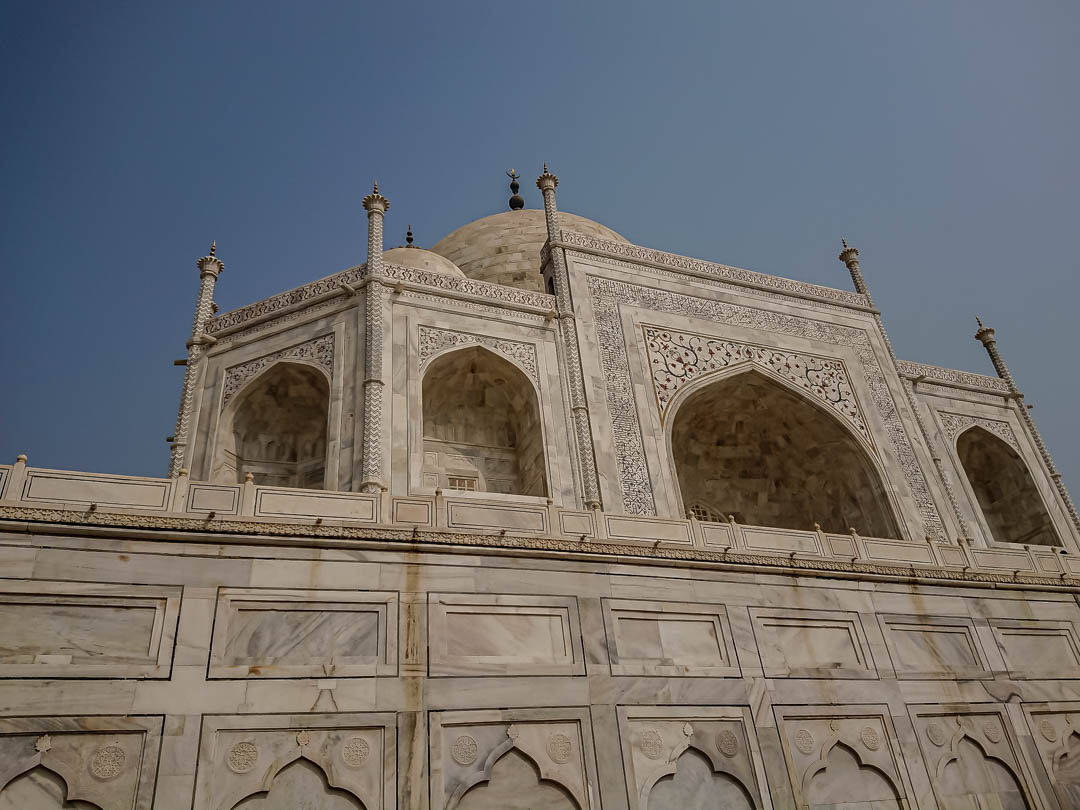
Taj Mahal
A Timeless Symbol Of Love And Architectural Grandeur In India
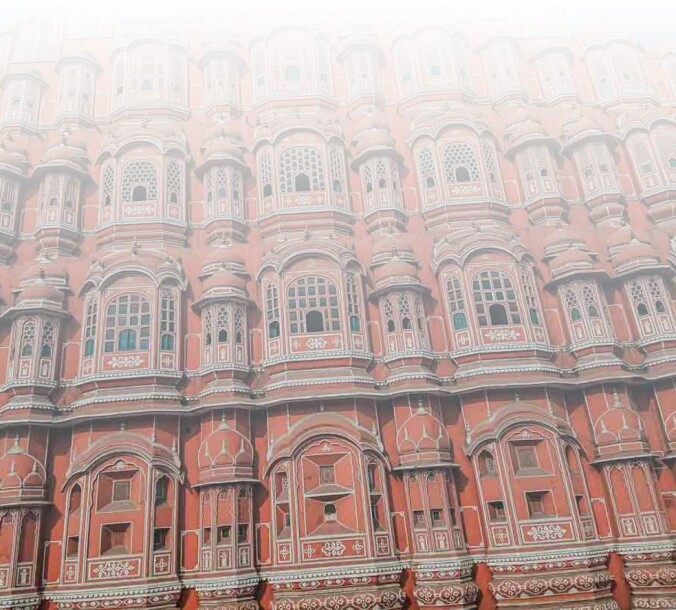
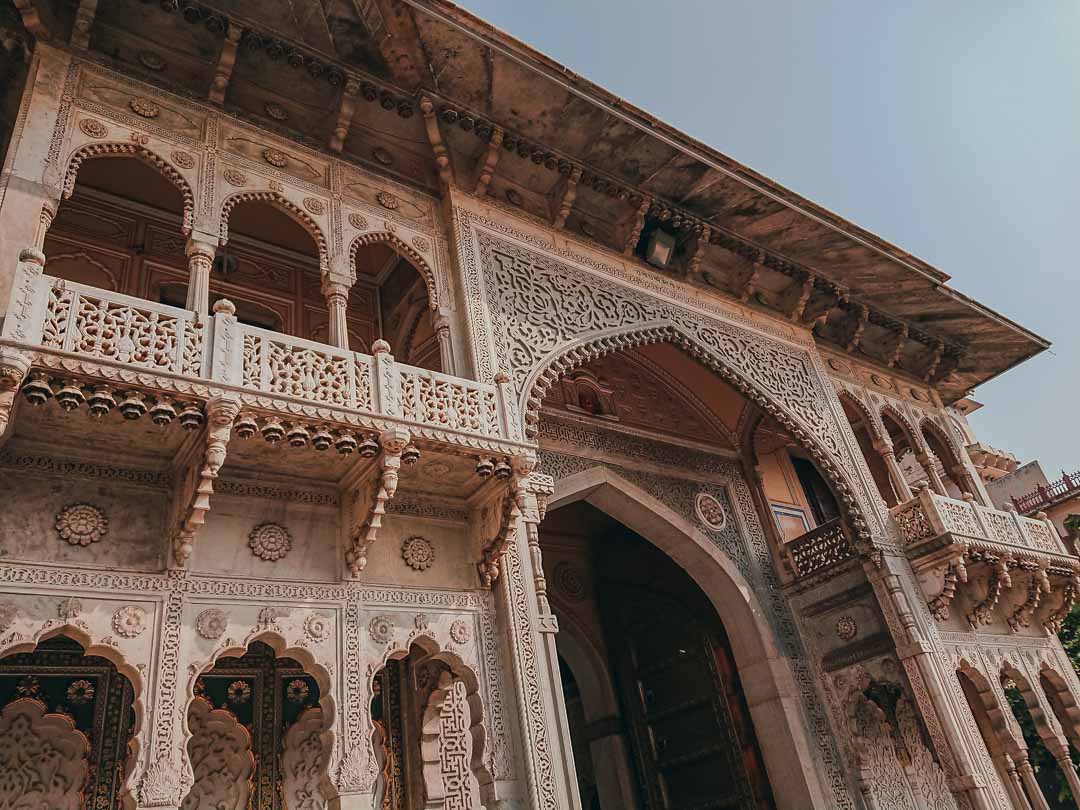
The City Palace
Where Royals Still Walk and History Whispers
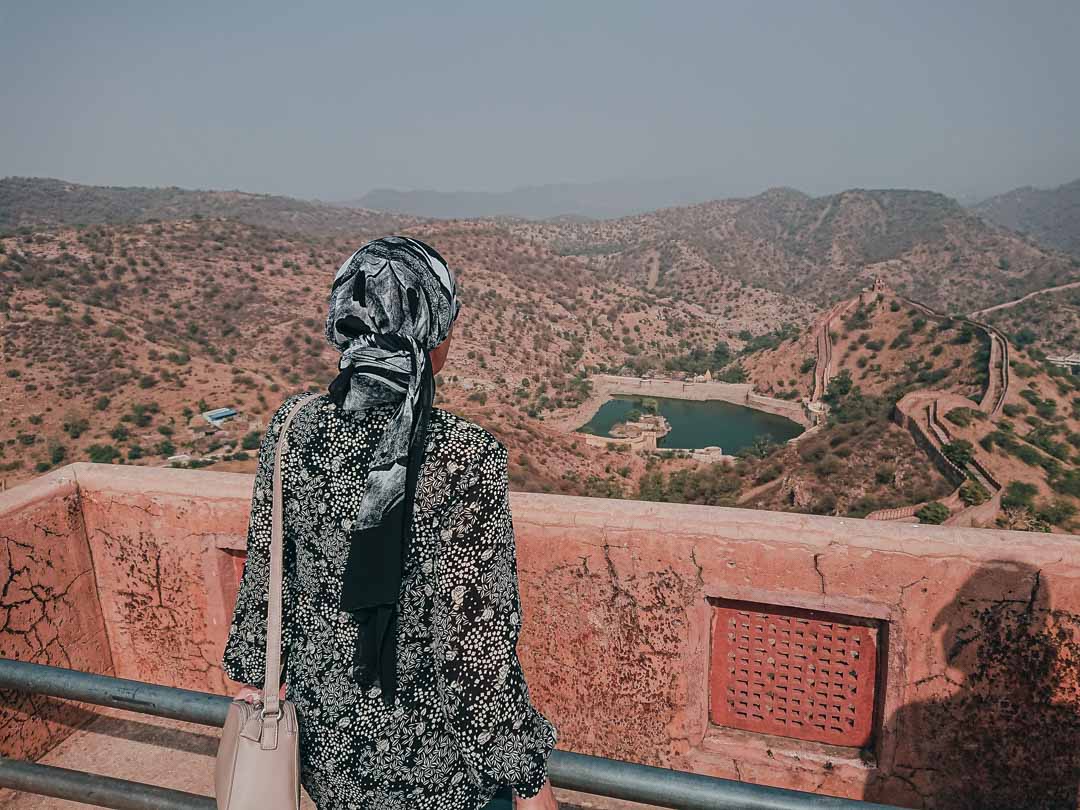
Jaigarh Fort
Where Royals Still Walk and History Whispers
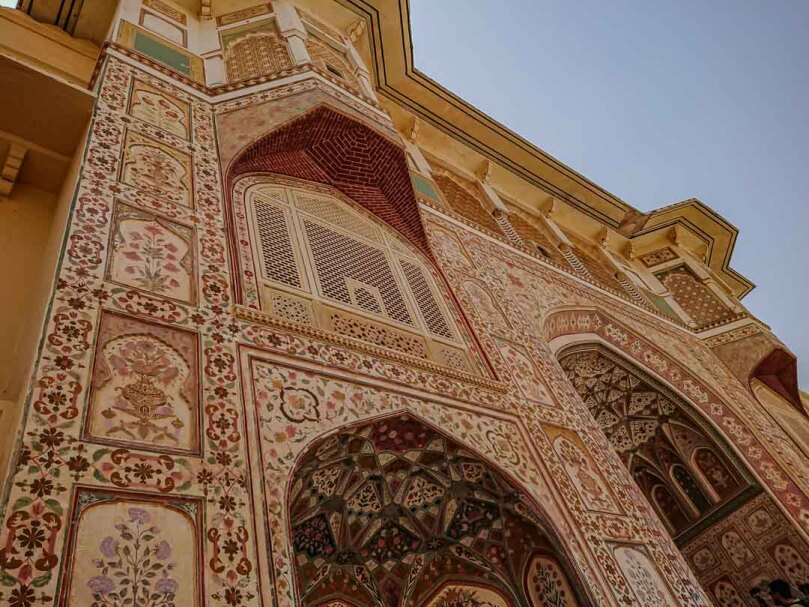
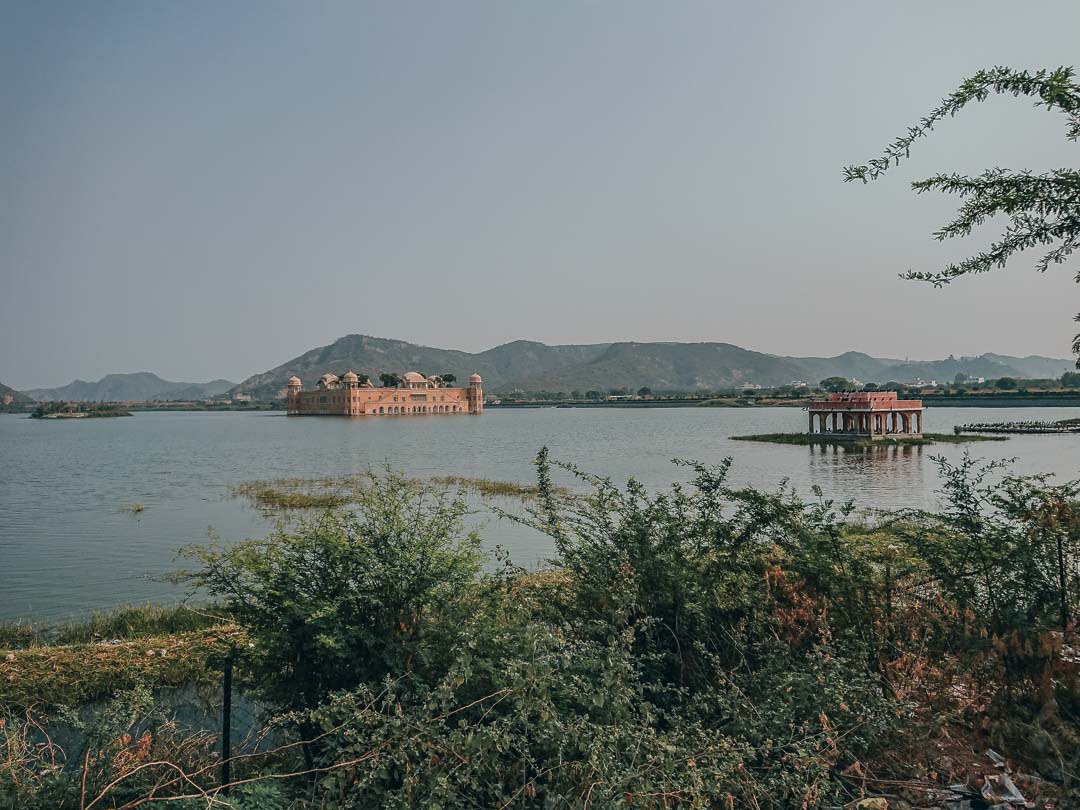
Jal Mahal
The Floating Palace of Jaipur
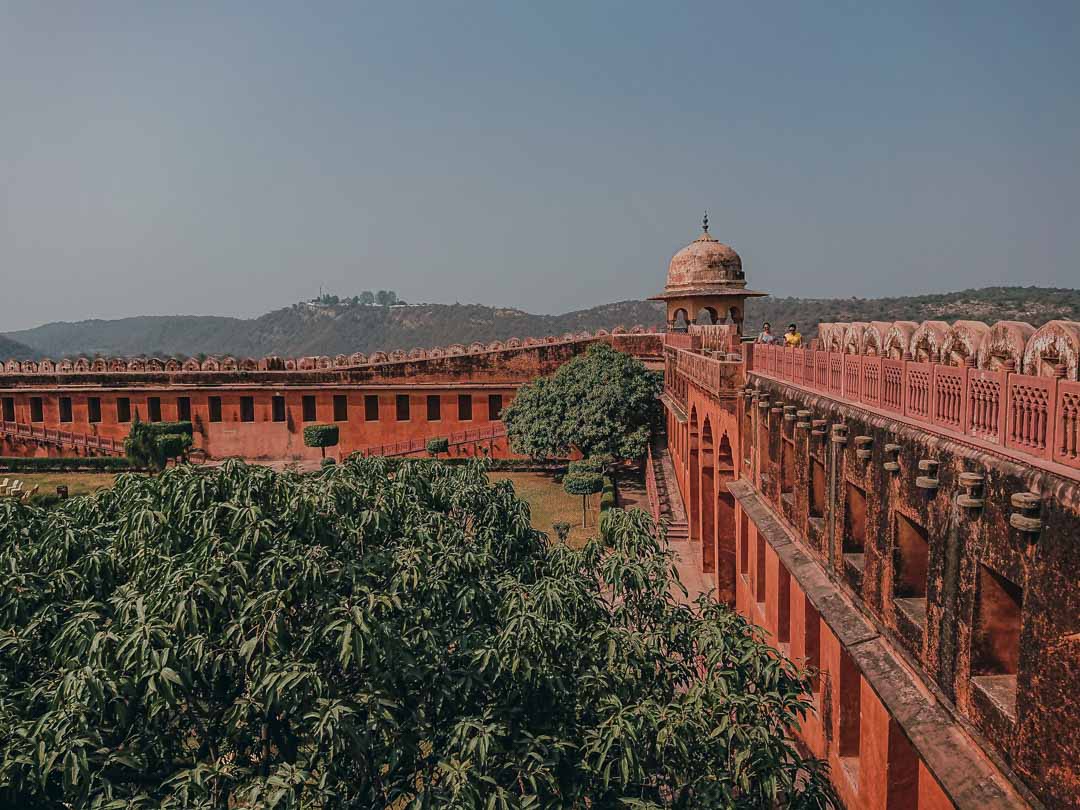
Jaigarh Fort
Where Royals Still Walk and History Whispers
New Delhi
New Delhi, India’s vibrant capital, blends rich history, stunning architecture, and bustling markets for an unforgettable travel experience
🔸 Rajghat Memorial 🔸
Honors Mahatma Gandhi’s Legacy Of Peace and Non-Violence Struggle For Independence
DISCOVER


Shri Laxmi Narayan Temple
A Spiritual Oasis in New Delhi

Qutub Minar
A Towering Testament to History and Heritage
Rajghat Memorial
Honors Mahatma Gandhi’s Legacy Of Peace and Non-Violence Struggle For Independence
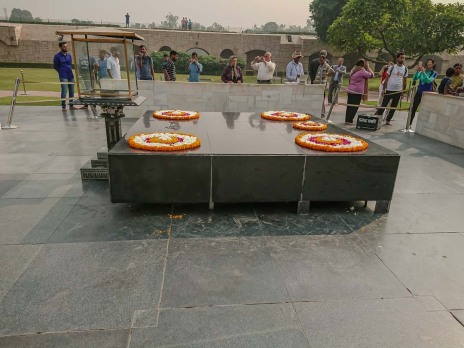
A Sanctuary of Peace and Legacy
The Rajghat Memorial, located in central New Delhi, honors Mahatma Gandhi, the "Father of the Nation."
This serene spot, located beside the Yamuna River, represents India's struggle for independence as well as Gandhi's values of peace and nonviolence.
A visit here provides opportunities for meditation and inspiration; here's what you need to know to have a meaningful and memorable experience.
Location and How to Get There
Rajghat, located on Mahatma Gandhi Marg near the Yamuna River and southeast of the Red Fort, is easily accessible.
Visitors can reach it via Indraprastha or Delhi Gate metro stations, taxis and buses from across Delhi, or by train from nearby railway stations.
It’s also walkable from central Delhi attractions like the Red Fort and Jama Masjid
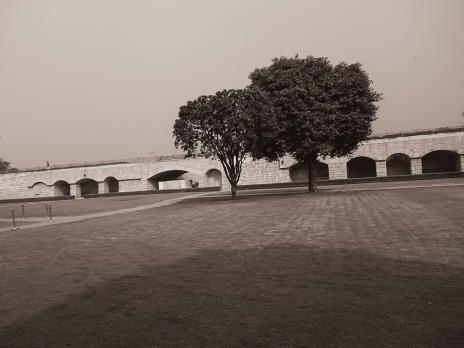
History and Significance
Rajghat is the site where Mahatma Gandhi was cremated in 1948, honoring his nonviolence and truth doctrine.
Vanu G. Bhuta designed the memorial in 1950, & it symbolizes Gandhi's simplicity.
It is an important pilgrimage destination that attracts dignitaries and visitors from all over the world, representing peace and inspiring leaders such as Martin Luther King Jr., Nelson Mandela, and Barack Obama.
Eternal Flame of Peace
Rajghat's appeal stems from its basic elegance—a 12x12-foot black marble platform open to the sky, etched with Gandhi's final words, "Hey Ram."
An eternal flame honors his legacy, which is surrounded by gardens filled with trees planted by global leaders.
Nearby, the National Gandhi Museum shows personal relics, increasing the site’s historical and worldwide significance.
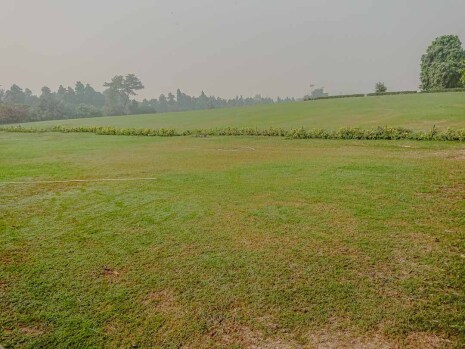
Perfect Moments to Visit
The best time to visit Rajghat is between October and March, when the weather in Delhi is pleasant, ranging from 15° to 30° Celsius.
Early mornings and evenings provide cooler, less crowded environments ideal for reflection and photography.
Attend the Friday 5:30 PM prayer service, or come on October 2 or January 30 for special activities.
Avoid the scorching summer months.
Whispers of Timeless Peace
Visiting Rajghat provides a tranquil, meditative experience amidst Delhi's hectic metropolitan life.
The tranquil gardens, perpetual flame, and humble memorial encourage humility and reflection on Gandhi's teachings on peace and nonviolence.
Daily fresh flowers and Gandhi's remarks in several languages strengthen the emotional bond, making it a remarkable monument to his humane legacy.
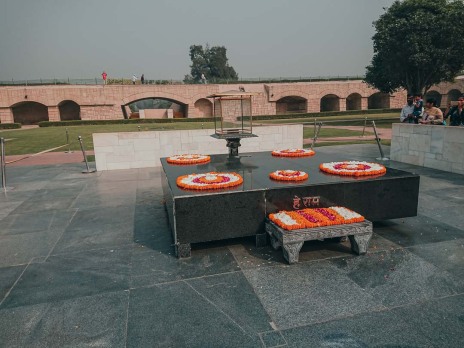
Respectful Visits Made Easy
Dress modestly and remove your footwear before visiting Rajghat.
Maintain silence to maintain a calm atmosphere, and avoid trash by utilizing dustbins. Photography is permitted, but please keep it respectful—no disruptive behavior or selfies.
Donation bins around the samadhi accept contributions to help the site's upkeep.
Explore Rajghat’s Historic Surroundings
National Gandhi Museum (0.5 km):
Displays Gandhi’s belongings, photos, and daily films (closed Thursdays).
Red Fort (2.1 km): UNESCO site featuring Mughal architecture.
Jama Masjid (2.5 km):
One of India’s largest mosques.
India Gate (5.3 km):
War memorial with scenic lawns.
Connaught Place (4.2 km):
Busy shopping and dining area.
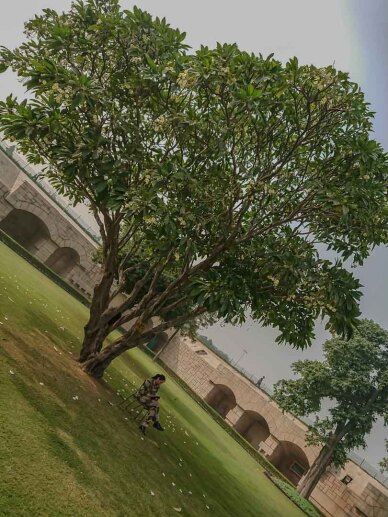
Heart of Peaceful Heritage
Rajghat is an important emblem of Indian history and Gandhi's nonviolent ideology, which inspired freedom. It attracts pilgrims and represents global peace. Weekly Friday prayers and annual festivities commemorating Gandhi's birth and death highlight its significance.
Nearby samadhis of figures such as Nehru emphasize its significance in India's political and cultural legacy.
Rajghat: Legacy in Focus
Rajghat appears in films, documentaries, and books commemorating Gandhi's life, including Richard Attenborough's Gandhi (1982).
The National Gandhi Museum shows daily videos about his ideology.
Its beautiful environment is frequently featured in travel blogs, photographs, and cultural stories, representing peace, resilience, and Gandhi's lasting influence.
Shri Laxmi Narayan Temple (Birla Mandir)
A Spiritual Oasis in New Delhi
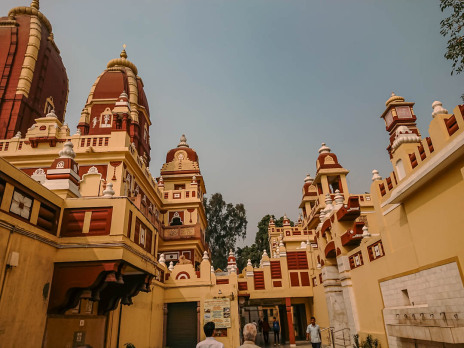
Sanctuary Amidst Sacred Splendor
The Shri Laxmi Narayan Temple, also known as Birla Mandir, is a magnificent Hindu temple dedicated to Lord Vishnu and Goddess Lakshmi in Delhi's bustling city center.
Blending spiritual quiet, architectural beauty, and cultural depth, it provides all visitors with a peaceful escape from the city's commotion as well as a significant peek into India's complex religious past.
Accessible Paths to Peace
Birla Mandir sits on Mandir Marg near Gole Market, in Delhi’s central Connaught Place area, making it easily reachable.
Visitors can arrive by metro (nearest: RK Ashram Marg or Rajiv Chowk), DTC buses, taxi, or even on foot.
It’s also a 30-minute drive from the airport. Limited parking is available, especially during peak times
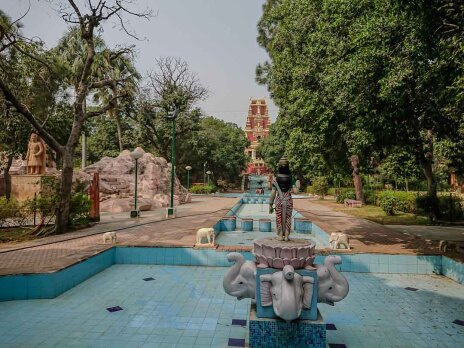
A Temple for All Hearts
Birla Mandir, built between 1933 and 1939 by Baldeo Das Birla and his son Jugal Kishore, was opened by Mahatma Gandhi, who insisted on the inclusion of all castes and faiths, defying convention.
With direction from Pandit Vishwanath Shastri and a final yagna by Swami Keshavanandji, the temple achieved permanent historical and spiritual significance.
Heritage rises in stone
Birla Mandir, Delhi's first great Hindu temple, bridged a cultural divide created by historical restrictions under Mughal rule.
Its magnificent spires and inclusive spirit, aided by the philanthropic Birla family, made it a beloved symbol of renewal.
Today, it draws both believers and visitors, particularly during lively festivities such as Janmashtami and Diwali.
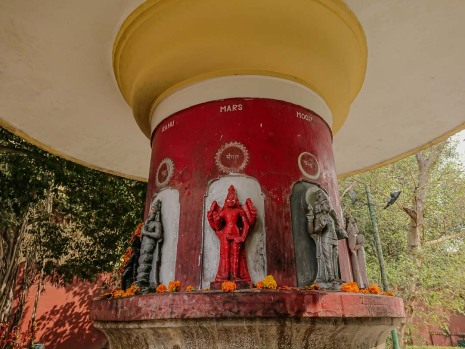
Harmony in Sacred Stone
Sris Chandra Chaterjee built Birla Mandir, which features Nagara-style architecture with Orissan and Mughal elements, and was inspired by Lutyens. It covers 7.5 acres and contains white marble, ornate carvings, and vibrant frescoes.
The main shrine celebrates Vishnu and Lakshmi, with side shrines dedicated to Shiva, Parvati, Ganesha, Hanuman, Krishna, and Buddha, representing the temple's inclusive attitude.
Reflections on Divine Beauty
Birla Mandir houses the Geetopachar Mandal, which is carved with Bhagavad Gita phrases, as well as the Sheesh Mahal, which has mirrors that reflect Lord Krishna indefinitely.
Lush gardens, fountains, and patriotic sculptures, such as the magnificent elephant monument, add to its allure.
The temple provides a rich cultural and visual experience for all visitors.
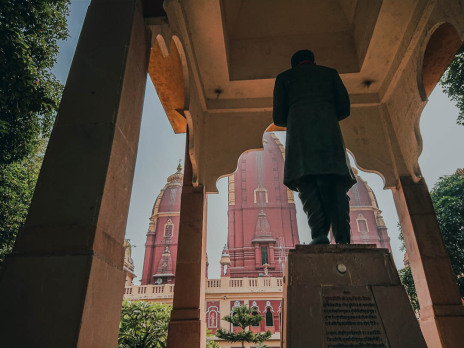
Moments of Divine Timing
Birla Mandir is open daily, best visited during Janmashtami and Diwali, when it glows with lights and festive décor.
For peace, visit early morning (4:30–9:00 AM) or evening aarti (6:30–7:00 PM), especially Fridays.
October to March offers ideal weather. Hours: 4:30 AM–1:30 PM and 2:30 PM–9:00 PM, closed briefly midday.
Sacred Steps & Smart Tips
Dress modestly and remove your shoes for a fulfilling visit to Birla Mandir; lockers are available for footwear and valuables. Photography is banned.
Respect existing ceremonies by being silent, particularly during prayers. Expect crowds during festivals, so arrive early.
Wear socks for comfort on the marble floors, wander through the tranquil gardens, and don't miss the spiritually uplifting sunset aarti.
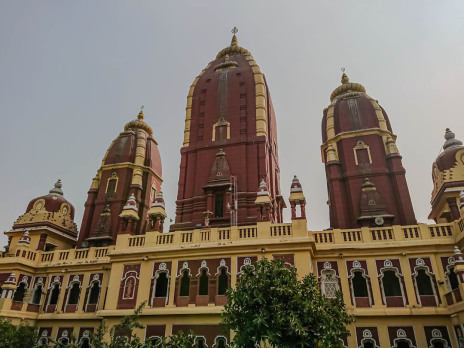
Temple Trails and City Tales
Birla Mandir's ideal position provides easy access to Delhi's landmarks, including India Gate, Jantar Mantar, and Rashtrapati Bhavan.
Visit Gurudwara Bangla Sahib, Humayun's Tomb, and Qutub Minar for spiritual and historical insights. For a taste of the local cuisine, visit Connaught Place or Gole Market. For a more complete experience, guided trips frequently incorporate visits to Akshardham or the Lotus Temple.
Temple Etiquette Essentials
Photographing within Birla Mandir is strictly prohibited; follow this regulation to prevent problems. Maintain a moderate level of noise and avoid disturbing prayers.
Dress modestly to ensure entry. If security wants a tip, politely reject. Avoid festivals and lunchtime closures for a more quiet visit. Carry few valuables to make locker use easier.
Qutub Minar
A Towering Testament to History and Heritage

Overview
Qutub Minar, located in the vibrant core of India's capital, is a lasting symbol of Delhi's rich historical and cultural history.
This UNESCO World Heritage Site in South Delhi's Mehrauli neighborhood provides more than just a monument; it's a journey through decades of architectural mastery and history.
It ensures a memorable visit for history aficionados, architecture enthusiasts, and curious visitors alike.
Location and How to Get There
Qutub Minar, located in South Delhi's Mehrauli region, roughly 15 kilometers from downtown Delhi, is easily accessible by a variety of transportation choices. The Yellow Line of the Delhi Metro stops close, followed by a short ride in a car. Buses 493, 502, and 539 serve the monument.
Taxis, ride-hailing apps, the adjacent Indira Gandhi Airport (14 km), and the New Delhi Railway Station (17 km) all provide easy access.
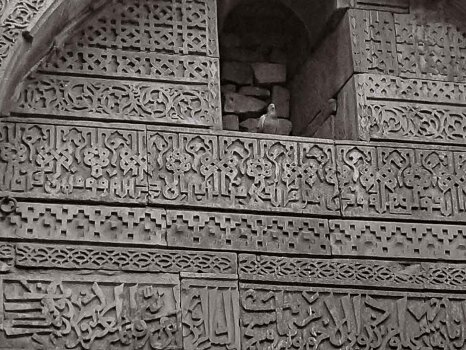
History
Its history began in 1199 AD, when Qutb-ud-din Aibak constructed the 1st story to commemorate Muslim sovereignty after defeating Prithviraj Chauhan.
His successor, Iltutmish, constructed three further stories between 1211 and 1236.
Following lightning damage in 1369, Firoz Shah Tughlaq repaired the top storey.
Later renovations by Sikandar Lodi and Major Robert Smith maintained its beauty.
Fame
Qutub Minar is known as the world's highest brick minaret, rising 72.5 meters tall and representing the synthesis of Indo-Islamic architecture. Designated a UNESCO World Heritage Site in 1993, it commemorates the development of the Delhi Sultanate and draws millions of visitors each year, making it a major global landmark.
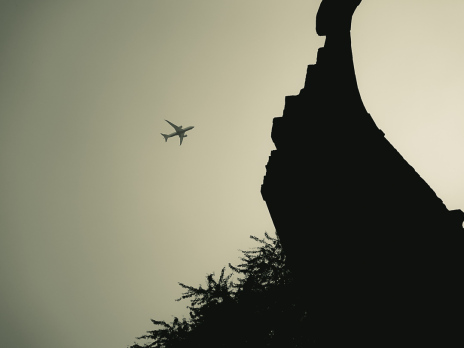
What Makes Qutub Minar Unique?
Qutub Minar displays Indo-Islamic architecture. Its five tapering levels of red sandstone and marble are decorated with exquisite carvings, Quranic passages, and lotus motifs. It is inspired by Afghanistan's Jam Minaret, with alternating flutings and balconies supported by honeycomb brackets. The Qutub Complex also houses the old Quwwat-ul-Islam Mosque, the rust-resistant Iron Pillar, and the elegant Alai Darwaza Gate.
Best Time to Visit
The best time to visit Qutub Minar is between October and March, when the weather in Delhi is pleasant and agreeable, with temperatures ranging between 10 and 25 degrees Celsius. Early mornings and late afternoons offer better lighting and less crowds. Avoid the rainy season (July-September) owing to humidity and waterlogging. The yearly Qutub Festival in November or December features classical music and dance.
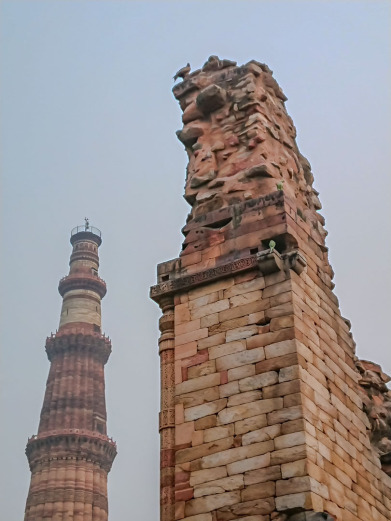
Tips for Visitors
Wear comfortable shoes for walking around the large Qutub Minar complex. Stay hydrated by bringing water, especially in warmer months. Hiring certified or audio guides adds valuable historical insight. Respect the monuments by not touching carvings. Mobile photography is allowed, but tripods need permission. The site is open 7 AM to 5 PM, with possible seasonal changes
Nearby Attractions and Activities
The Qutub Complex is home to the Quwwat-ul-Islam Mosque, Alai Darwaza, Alai Minar, and the Iron Pillar. Mehrauli Archaeological Park, located nearby, houses 11th-century structures, while the Garden of Five Senses features calm gardens. Hauz Khas Village and Champa Gali have bustling cafes and boutiques.
Nearby marketplaces, such as Sarojini and Lajpat, are ideal for purchasing souvenirs and spices.
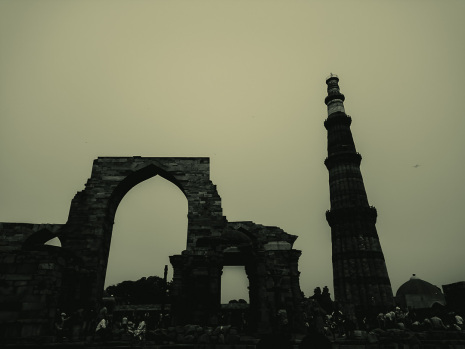
Role in Literature, Cinema, and Art
The striking silhouette of the Qutub Minar is a symbol of Delhi's past, as seen in films, travel books, and photographs.
It appears on Delhi Metro cards and tourist advertisements. The annual Qutub Festival celebrates Indian classical music and dance, enhancing its cultural value.
In 2013, a 360° virtual tour was introduced, increasing its digital accessibility and global reach.
Role in Local Economy and Tourism
Qutub Minar is a key driver of Delhi’s tourism, welcoming millions of visitors yearly and supporting local hotels, restaurants, and markets.
In 2006, it was India’s most-visited monument with 3.9 million tourists.
The Qutub Festival attracts cultural visitors, while its adoption by Yatra under the “Adopt a Heritage” scheme promotes sustainable tourism development
Agra
Home to the majestic Taj Mahal, offers rich history, stunning Mughal architecture, and vibrant local culture
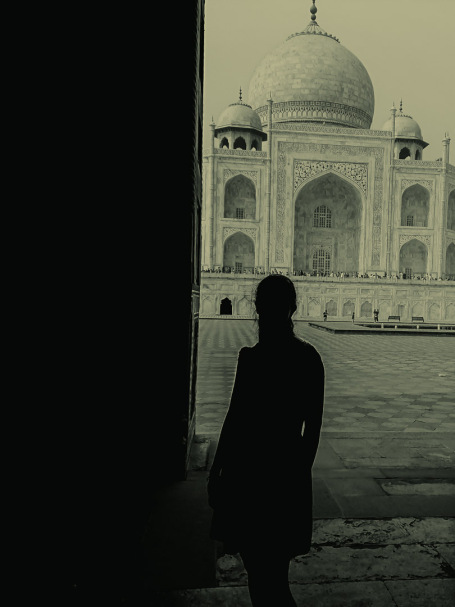

Agra Fort
A Timeless Marvel of Mughal Grandeur

Taj Mahal
A Timeless Symbol Of Love And Architectural Grandeur In India
Taj Mahal
A Timeless Symbol Of Love And Architectural Grandeur In India
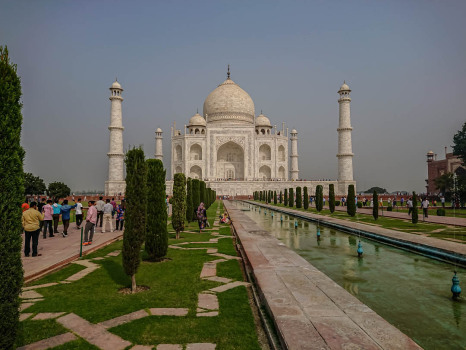
History and Fame
The Taj Mahal is a beautiful Mughal mausoleum designed by Ustad Ahmad Lahori and built by Emperor Shah Jahan in remembrance of his wife Mumtaz Mahal from 1632 to 1653.
It represents eternal love and is recognized as one of the Seven Wonders of the Modern World due to its beauty, flawless symmetry, and romantic origins.
Location and How to Get There
The Taj Mahal is located in Agra, Uttar Pradesh, on the Yamuna River's southern bank near Dharmapuri, Tajganj.
The nearest airport is Agra's Kheria (5 kilometers), however Delhi's Indira Gandhi Airport (230 kilometers) has more flights.
Agra is accessible by train, notably the Gatimaan Express from Delhi, as well as by car via the Yamuna Expressway. Taxis and rickshaws are common modes of local transportation.
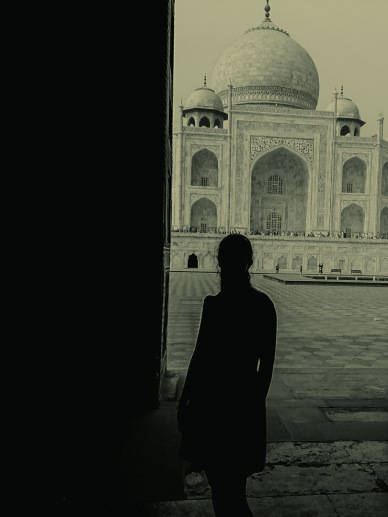
The Taj Mahal stands out for its:
Symmetry – Flawlessly balanced from all sides, except Shah Jahan’s tomb.
Architecture – A fusion of Persian, Islamic, and Indian designs, adorned with detailed marble inlays (pietra dura) and calligraphy. White Marble – Its shimmering surface shifts color with daylight, radiant at dawn and dusk.
Gardens – The Charbagh layout represents paradise. A must-visit for its breathtaking beauty and rich history.
Best Time to Visit
The ideal time to visit is October to March, when temperatures are mild (15–25°C). Steer clear of summer (April–June) with extreme heat (up to 45°C) and monsoon (July–September) with heavy rains.
Arriving early morning helps avoid crowds and offers stunning views of the Taj Mahal bathed in sunrise light.
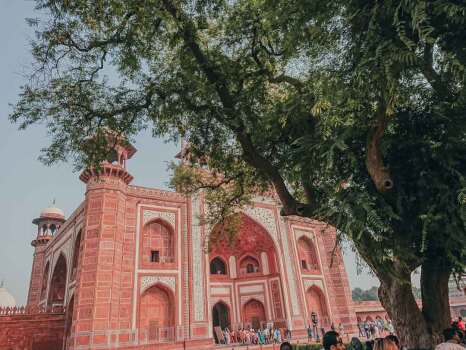
Visitor Guidelines for Taj Mahal
Dress respectfully, covering your shoulders and knees. Remove your shoes or use the provided covers to protect the marble floors.
Security is strict; avoid large bags, food, and prohibited items such as drones or tripods. Stay hydrated, especially in heat.
Visit early to avoid crowds.
While tripods are prohibited, mobile photography is permitted.
Explore beyond the Taj Mahal
Discover Agra Fort (2.5 km), a beautiful Mughal castle with views of the Taj Mahal. Stroll through Mehtab Bagh (1 km) for beautiful sunset views. Admire the complex "Baby Taj" (6 kilometers), which served as the design inspiration for the main monument. Day tour to Fatehpur Sikri (40 km), a magnificent abandoned Mughal city. Sadar Bazaar sells marble crafts and carpets, while famous restaurants serve Mughlai food or sweet.

A Cultural and Historical Treasure
The Taj Mahal, Agra's crown gem, represents Mughal grandeur and India's architectural brilliance, serving as both a historical landmark and a source of local pride. It preserves traditional crafts such as marble inlay work, preserving ancient skills. Recognized as a UNESCO World Heritage Site (1983) for its high cultural significance, the Archaeological Survey of India (ASI) protects it as a national treasure.
Legends and Myths of Taj Mahal
According to history, Shah Jahan spent his final years imprisoned in Agra Fort, yearning for the Taj Mahal from afar.
Another long-standing myth is that a "Black Taj" was planned across the Yamuna, however there is no evidence to support this.
Dramatic traditions relate of artists' hands being chopped to preserve the Taj's originality, but they are unsubstantiated mythology rather than historical fact.

The Taj Mahal's Cultural Influence
This architectural marvel has captivated creative minds across generations.
Nobel laureate Rabindranath Tagore immortalized it as "a teardrop on the cheek of time" in his poetry. It has starred in cinematic classics from Mughal-e-Azam to Slumdog Millionaire. Artists worldwide recreate its splendor in paintings and photographs, while its silhouette remains an enduring global symbol of romance and Indian heritage.
Entry Fees and Value (2025)
Fees: ₹50 for Indian visitors, ₹1,100 for foreign tourists (including the mausoleum), ₹540 for SAARC/BIMSTEC members, and free for children under 15.
Optional charges include guides (₹500-1000) and photographic permits, but the experience is invaluable.
The Taj's majestic architecture, rich history, and profound emotional impact are worth every rupee spent on this once-in-a-lifetime visit.
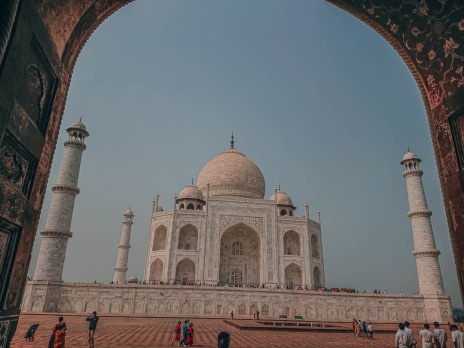
Suitability
Families with children will like it, though maneuvering steps with strollers may be tricky.
Senior tourists can utilize ramps, although wheelchair availability is restricted; to avoid the heat, visit in the mornings or evenings.
While older children will be fascinated, younger children may want breaks owing to the lengthy walking involved.
Role in Local Economy and Tourism
Prior to the pandemic, the Taj Mahal was the economic backbone of Agra, attracting over 6 million visitors each year.
As the city's primary tourist attraction, it supports a wide range of jobs, from marble artisans and tour guides to hoteliers and shop owners. The monument's global appeal propels Agra's tourism-dependent economy, bolstering the handicraft and hospitality sectors that revolve around this renowned wonder.
Agra Fort
A Timeless Marvel of Mughal Grandeur
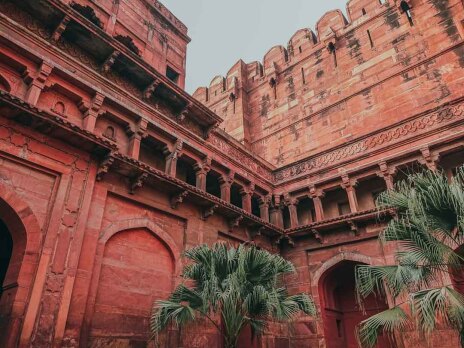
A Mughal Masterpiece by the Yamuna
Agra Fort, perched majestically along the Yamuna River, is a stunning display of Mughal glory, ideal for history buffs and architecture enthusiasts.
Though sometimes overshadowed by the neighboring Taj Mahal, this UNESCO World Heritage Site captivates visitors with its huge red sandstone complex, royal palaces, and rich historical legacy, providing an amazing peek into India's regal past.
✈️ Air:
Kheria Airport for domestic flights; international visitors arrive via Delhi.
🚆 Train:
Well-connected via Agra Fort and Cantt stations, with express trains
🚗 Road:
Accessible via Yamuna Expressway (3 hrs from Delhi) or intercity buses/taxis.
🚲 Local Transport:
Auto-rickshaws, taxis, or eco-friendly cycle rickshaws.
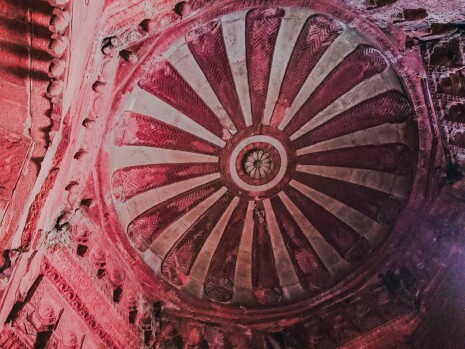
History and Fame
Agra Fort, originally a Rajput brick fort, was rebuilt by Emperor Akbar in 1565 as a spectacular Mughal fortress.
Built primarily of red sandstone, subsequent kings like as Shah Jahan added white marble palaces.
It served as the Mughal home until 1638 and is well-known for its architecture, history, and Shah Jahan's captivity.
It is a UNESCO World Heritage Site near the Taj Mahal.
Uniqueness
Agra Fort covers 94 acres and combines strength and grace in Mughal architecture. Its red sandstone walls and marble palaces, such as the Jahangiri Mahal and Sheesh Mahal, are influenced by Persian, Central Asian, and Indian architecture. Visitors to Musamman Burj can enjoy amazing views of the Taj Mahal.
The fort's tiers highlight the emperors' legacies, with mosques and gardens representing Mughal grandeur.
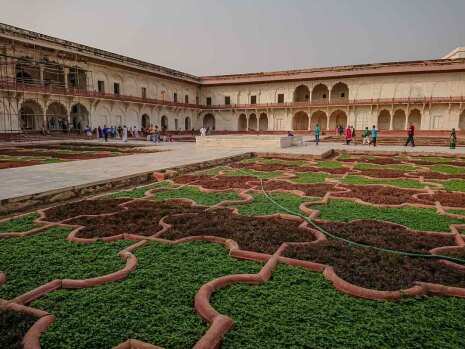
Best Time to Visit
Plan your vacation from October to March, when temperatures (10-25°C) are suitable for exploration. Early mornings (6-8 AM) and late afternoons (4 PM-sunset) provide cooler weather, better lighting, and fewer crowds.
Avoid April–June (scorching 45°C temperatures) and July–September (monsoon rains). Weekdays outside of peak season (Dec-Jan) offer the most tranquil experience.
Essential Tips for Visiting
For a memorable visit to Agra Fort, hire a government-approved tour or audio guide to provide deep historical insights.
Dress modestly, with shoulders and knees covered, and wear comfortable shoes for the 2-3 hour tour. Bring sun protection, such as hats and sunscreen.
Stay alert for pickpockets, respect the location, and arrive early to avoid crowds and heat.
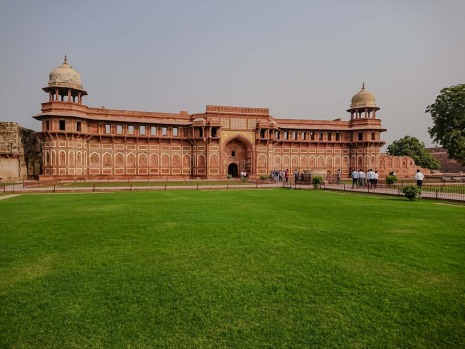
Heart of Mughal Heritage
Agra Fort is crucial to Agra's cultural and historical character, having served as the Mughal rulers' palace and political hub from 1526 until 1658. Its architecture combines Hindu, Islamic, and Persian forms, illustrating the Mughal cultural fusion. The fort saw significant events, including Shah Jahan's incarceration, and stands as a proud icon of Agra's artistic and historical history, alongside the nearby Taj Mahal.
UNESCO recognizes Agra Fort.
Agra Fort was designated a UNESCO World Heritage Site in 1983 due to its outstanding Mughal architecture and historical significance as a power hub.
Its red sandstone and marble architecture, intricate carvings, and blend of military and regal design highlight Mughal creativity.
The Archaeological Survey of India protects this legacy for future generations.
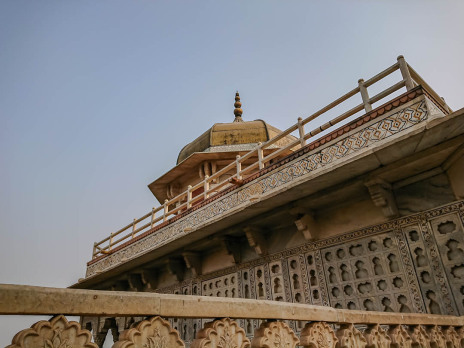
Rich With Fascinating Tales
Agra Fort is steeped in history and folklore. Shah Jahan was famously imprisoned there by his son Aurangzeb, where he spent his final years admiring the Taj Mahal.
The fort is also said to have housed the Koh-i-Noor diamond. Emperor Akbar's reign stressed religious tolerance, as seen by structures such as the Jahangiri Mahal, which celebrated cultural fusion.
Timeless Majesty in Stone
Agra Fort has inspired many art forms. It appears in Bollywood films like Jodhaa Akbar and Mere Brother Ki Dulhan, showcasing its royal grandeur.
European travelers like William Finch praised it in historical accounts. Its stunning architecture and views of the Taj Mahal also make it a popular subject for photographers and artists, highlighting its beauty and strength
Jaipur
Jaipur, Rajasthan's lively capital, is a mesmerizing blend of regal heritage, colorful bazaars, and breathtaking architecture, including the famed Hawa Mahal and Amer Fort.
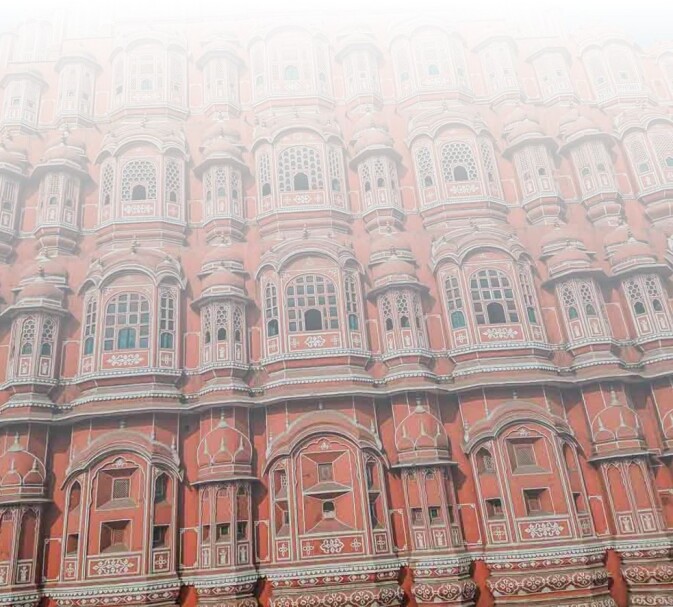

The City Palace
Where Royals Still Walk and History Whispers

Jaigarh Fort
Where Royals Still Walk and History Whispers


Jal Mahal
The Floating Palace of Jaipur

Jaigarh Fort
Where Royals Still Walk and History Whispers
Hawa Mahal
Hawa Mahal whispers royal tales through honeycomb walls
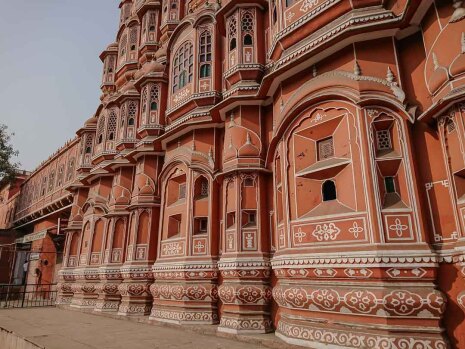
Whispers Through Wind Palace
Hawa Mahal, or the "Palace of Winds," stands in central Jaipur, Rajasthan, at Hawa Mahal Road, Badi Choupad, within the Pink City’s vibrant J.D.A. Market.
This iconic structure lies at the edge of the City Palace complex and offers a panoramic view of the lively streets of Jaipur’s historic Old City.
Getting to Hawa Mahal
Hawa Mahal is easily accessible. Jaipur International Airport lies about 12 km away, a 30-minute taxi ride.
Jaipur Junction Railway Station is 4–6 km off, around 15 minutes by auto. Badi Chaupar metro station is a minute’s walk.
City buses stop nearby, and autos, taxis, or even a walk from Old City hotels are convenient options.
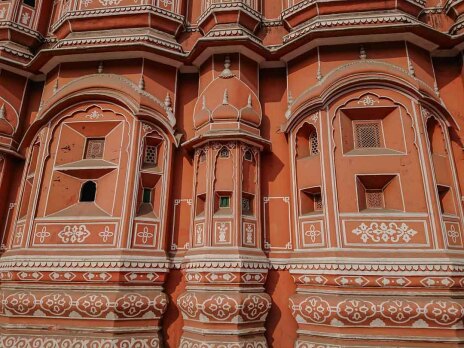
Veil of Royal Views
Maharaja Sawai Pratap Singh, the grandson of Jaipur's founder, commissioned the Hawa Mahal in 1799.
It was designed by architect Lal Chand Ustad and influenced by Jhunjhunu's Khetri Mahal.
It functioned as an expansion of the City Palace's women's section. Its goal was to allow royal women to observe street life and festivals discreetly, in accordance with the purdah system.
Why It’s Famous
The Hawa Mahal is famous for its stunning honeycomb façade, which includes 953 intricately carved jharokhas.
This architectural jewel, made of pink sandstone, features a charming mix of Rajput and Mughal styles.
Celebrated as a symbol of Jaipur's regal past, it is a timeless monument of the Pink City that draws visitors from all over the world.
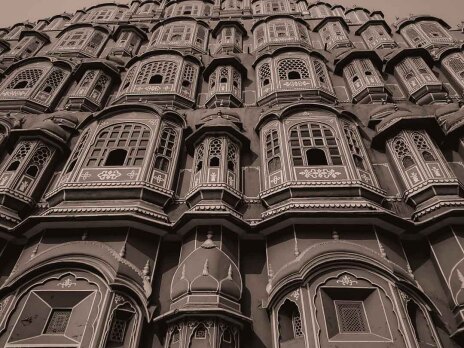
Breezes of Royal Splendor
The Hawa Mahal stands out for its unusual design: a five-story honeycomb façade with 953 jharokhas that circulate pleasant winds.
It combines Rajput and Mughal forms, with lotus motifs, arches, and delicate latticework.
It leans at 87 degrees and is notable for its lack of foundation. The palace provides magnificent city vistas while reflecting the grandeur and privacy of royal Rajput life.
Best Time To Visit
The best time to see Hawa Mahal is between October and March, when Jaipur's temperature is pleasant (15°C-25°C).
Go early in the morning or late in the afternoon to avoid crowds, enjoy milder temperatures, and see the palace illuminated by gentle golden light.
Morning visits provide a magnificent vista as sunlight passes through the jharokhas.
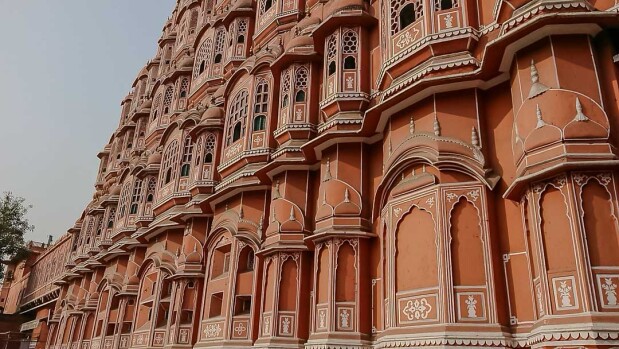
Palaces, Bazaars & Beyond
Hawa Mahal is close to several popular attractions, including City Palace (700m), Jantar Mantar (500m), Johari and Bapu Bazaars (900m), Amer Fort (11km), Nahargarh Fort, and Govind Devji Temple.
Chokhi Dhani offers a variety of cultural attractions, including camel safaris and folk shows, as well as shops, forts, and temples.
Echoes of Pink Heritage
The Hawa Mahal embodies Jaipur's regal tradition and architectural magnificence.
It is designed for royal women to see street life while remaining private, blending Rajput and Mughal elements.
A cultural landmark, it celebrates Jaipur's creative legacy during festivals such as Rajasthan Diwas.
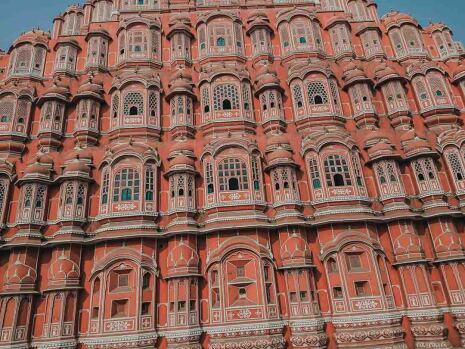
Veiled Crown of Jaipur
The Hawa Mahal's design is based on Lord Krishna's crown, demonstrating Maharaja Sawai Pratap Singh's devotion and earning it the nickname "Jaipur's crown."
Another story describes it as a secret viewing area for royal women, allowing them to observe festivals unnoticed while reflecting the cultural norms of the time.
Facade of Fame
The magnificent facade of the Hawa Mahal has received widespread attention in Indian media. It has appeared in films like as The Fall (2006), displaying its meticulous architecture, and is frequently featured in magazine photos and tourist guides. The palace is frequently depicted in literature as a symbol of Jaipur's regal lineage and innovative design, enticing writers and painters with its ethereal allure.
The City Palace
Where Royals Still Walk and History Whispers
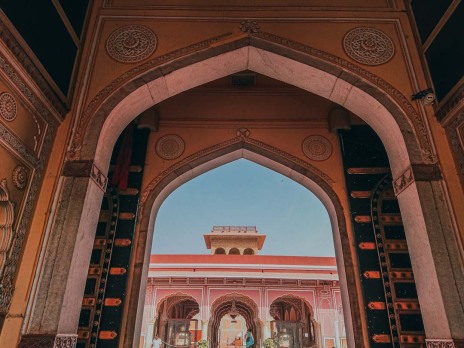
A Royal Adventure Awaits
Enter a realm once ruled by maharajas, where courtyards gleam with radiant mosaics and every corner whispers tales of Rajasthan's regal history.
Welcome to Jaipur's City Palace, the vibrant heart of the Pink City!
Here, history, culture, and architectural brilliance converge for an unforgettable journey.Join me exploring this majestic palace, uncovering its secrets, and planning your royal visit!
Finding Your Way
Centrally located in Jaipur's Pink City near Tripolia Bazaar, City Palace is easily accessible. From Jaipur Airport (12km), take a 30-minute taxi/auto-rickshaw. Arriving by train at Jaipur Junction (4.5km)?
A short rickshaw ride reaches its grand gates (Virendra Pol or Udai Pol) at Badi Chaupar. Alternatively, metro to Badi Chaupar station and walk through vibrant markets. Every approach feels regal.
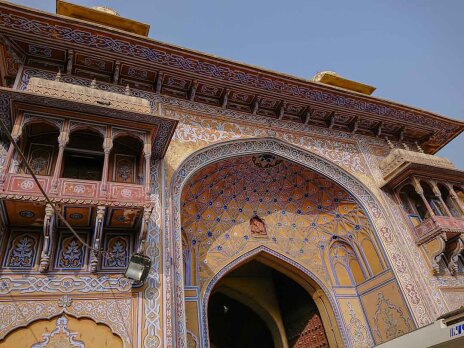
A Glimpse into a Regal Past
Founded in 1727 by Jaipur's creator, Maharaja Sawai Jai Singh II, the City Palace served as the Kachwaha dynasty's royal seat until 1949. Architects Vidyadhar Bhattacharya and Sir Samuel Swinton Jacob fused Rajput, Mughal, and European styles. Later rulers expanded it, creating a heritage showcase. Today, it's a cultural beacon, hosting events like the Jaipur Literature Festival and housing royalty, where history lives in every stone.
Why the City Palace Steals Your Heart
Discover must-see beauties like Pritam Niwas Chowk's four beautiful gates (Peacock, Lotus, etc.) with elaborate frescoes. Explore Chandra Mahal's mirrored halls and the Diwan-e-Khas, which houses the huge Gangajelies silver urns. The Maharaja Sawai Man Singh II Museum shows royal treasures such as textiles and a 250kg ruler's robe. This architectural synthesis provides an unmatched experience.
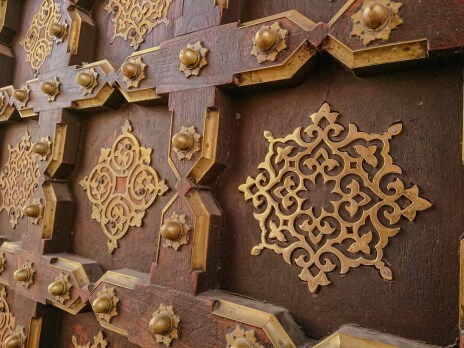
The Perfect Time to Visit
Visit between October and March for mild 15-23°C weather, great for royal grounds without the summer heat.
Arrive about 9:30 a.m. for optimal photo lighting and less people, or in the chilly late afternoons.
To enjoy the palace in full swing, plan your visit around festivities like as Diwali or the Jaipur Literature Festival in January.
Tips for a Royal Visit
Wear comfortable shoes and modest clothing. Stay hydrated and use the water offered. Photography is mostly permitted; please respect restricted locations. Allow 2-3 hours (longer for special tours).
Enhance your stay with an audio guide (INR 200, multilingual) or a local guide.
Accessibility features at the palace include ramps, wheelchairs, golf carts, and Braille guides.
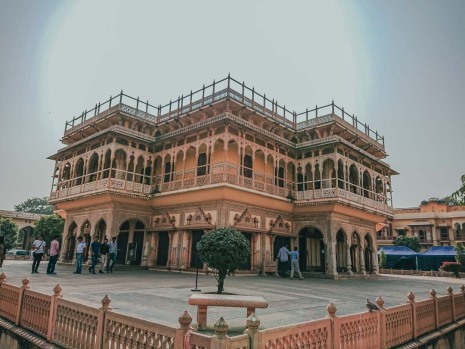
Adventures Beyond the Palace Walls
Discover Jaipur's hidden jewels outside of the palace. Walk to the magnificent Hawa Mahal facade or the UNESCO-listed Jantar Mantar observatory.
Amber Fort (11km) offers elephant rides, while Jaigarh Fort is known for its enormous cannon.
Visit Tripolia and Johari Bazaars to find local crafts. Don't miss the Govind Dev Ji Temple within the palace, which offers spiritual introspection.
A Cultural Heartbeat
The City Palace is more than just a landmark; it is Jaipur's cultural center. As the historic seat of the Kachwaha family, it represents Rajasthan's regal legacy.
The royal family still lives in Chandra Mahal and celebrates festivals such as Gangaur.
The Gunijankhana hosts concerts, and its museums preserve Rajasthani antiquities, making it a living heritage archive.
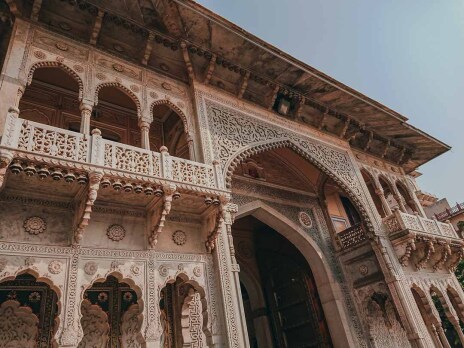
Legends That Echo
History whispers at the City Palace: view the Gangajelies silver urns, which were used to transport Ganga water to London, and the Sarvato Bhadra coronation platform, where Dussehra rites relate to ancient traditions.
Globally, it shines as the host of the Jaipur Literature Festival, starring in Bollywood and documentaries, and preserves rare historical images in its gallery—where past and present meet.
Is It Worth the Price?
Entry fees are INR 200 for Indian people and INR 700 for foreigners, with reductions available for students and children.
A foreigner composite ticket (INR 700, valid for two days) covers Jaigarh Fort and Cenotaphs. Exclusive tours, such as the Royal Grandeur (INR 2000), provide access to private regions. The fee is reasonable given the palace's splendor, though some areas may be extra.
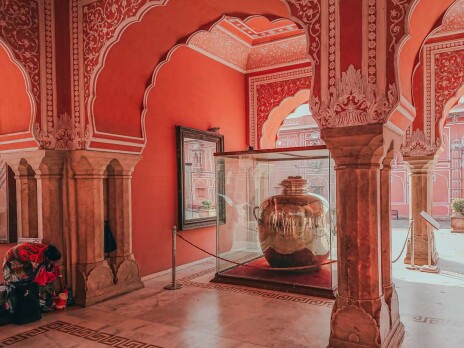
Pack Like a Pro
Sunscreen and Hat:
For sunny courtyards, especially in summer.
Camera:
To capture the palace’s beauty (mind the restricted areas).
Comfy Clothes:
Light, modest attire and flat shoes for walking.
Guidebook or App:
To dive deeper into the palace’s stories.
Who Can Enjoy It?
The City Palace is for everyone! Families like the bright courtyards, children are fascinated by the relics, and couples find romance in the elegance.
The elderly benefit from ramps, wheelchairs, and golf carts, while history aficionados enjoy museums. Accessibility elements such as Braille guides make it more inclusive for everyone.
Jaigarh Fort
Where Royals Still Walk and History Whispers
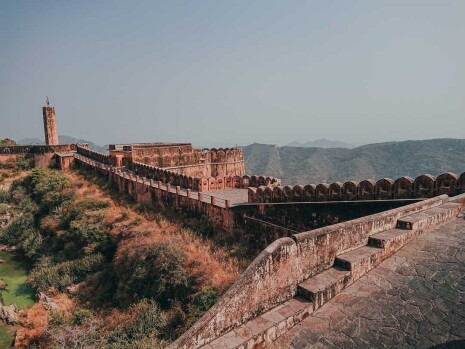
Overview
Jaigarh Fort ("Victory Fort") is perched high in the Aravalli hills, overlooking Jaipur. This 11th-century fortification immerses you in Rajput heroism and Mughal magnificence while providing breathtaking views.
Whether you enjoy history, photography, or adventure, it will be a wonderful journey. Discover the secrets of this powerful, invincible stronghold!
Getting to Jaigarh Fort
Jaigarh Fort crowns Cheel ka Teela, 15km from Jaipur, boasting views of Amer Fort and Maota Lake. Getting there:
Taxi/Auto: ~INR 500 round trip.
Bus: To Amer Fort, then ascend.
Drive: Via Jaipur-Delhi Highway; note possible parking fees.
Trek: 30-min scenic hike from Amer Fort. (Secret tunnel remains off-limits!)
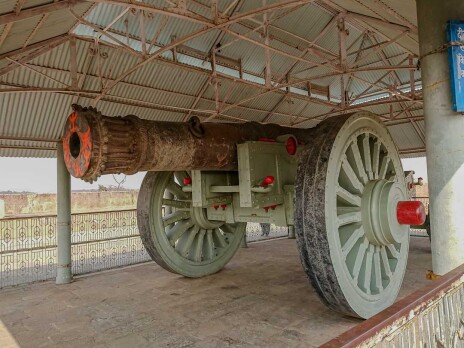
A Glimpse into Jaigarh’s Glorious Past
Jaigarh Fort, built in the 11th century by Raja Kakil Dev and enlarged in 1726 by Maharaja Sawai Jai Singh II, was constructed to safeguard the luxurious Amer Fort beneath it.
It was never conquered, earning the name "Victory Fort." During the Mughal Empire, it was a major gun foundry, producing ordnance that shaped battlefields.
More on History
Is it the crown jewel? The Jaivana Cannon is the world's largest cannon on wheels, weighing 50 tonnes and forged in 1720. Legend has it that its single test shot caused a crater kilometers distant!
The fort is also famous for whispered rumors of hidden wealth, which were rumored to be sought during India's 1970s Emergency—but the gold remains elusive, adding to Jaigarh's mystery.
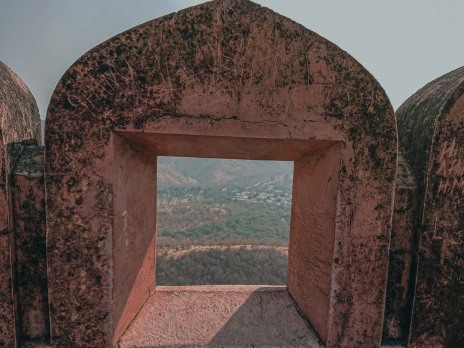
Jaigarh's highlights:
The Jaivana Cannon: A giant, intricately carved testament to Rajput skill.
Epic Views: Panoramic vistas of Amer Fort, Aravalli hills, and Jaipur's skyline.
Architecture: Explore red sandstone courtyards, Mughal-Rajput blended structures (Laxmi Vilas, Aram Mandir), and Charbagh gardens.
Living History: Armories, museums, and the foundry showcase royal artifacts and weapons, reviving Kachwaha legacy.
When to Visit: Timing is Everything
Plan your vacation between November and February to enjoy cool, pleasant weather ideal for visiting the fort's expansive grounds. Early mornings around 9:00 a.m. provide fewer crowds and golden light for excellent photographs. Monsoons (July-September) turn the hills green but can make routes slick, while summers (April-June) are scorching—best avoided unless you're a heat warrior. Weekdays are less crowded.
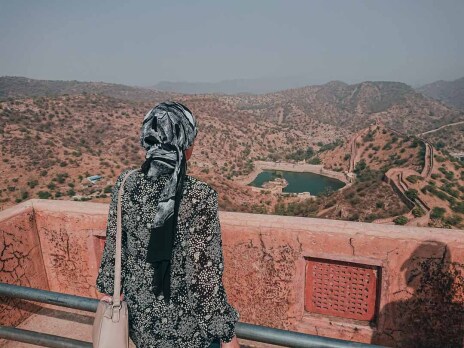
Tips for an Unforgettable Visit
Wear sturdy shoes on rough paths and stairs. Due of food scarcity, carry water and snacks. Hire a certified guide (₹100-200) for stories with minimal signage.
Supervise children and keep them on specified trails through the maze-like fort.
Pack sun and rain protection (hat, umbrella, and sunscreen).
Respect heritage: avoid touching artifacts or entering restricted locations such as Khilbati Niwas.
Nearby Gems to Explore
Amer Fort (700m): UNESCO site with Sheesh Mahal & sound/light show.
Nahargarh Fort:
Guided tours, views, water walk.
Ma Shila Devi Temple:
Sacred Amer shrine.
Panna Meena ka Kund:
Geometric stepwell.
Anokhi Museum (1km):
Hand-printing artistry.
Old City gems: City Palace & Hawa Mahal.
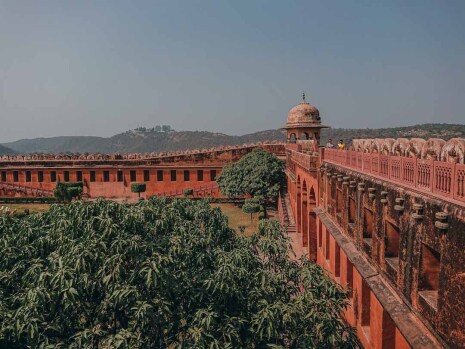
Legends That Whisper
Jaigarh is alive with legend: legends of gold hidden in water tanks or chambers that reportedly funded Jaipur's construction remain unresolved, despite a 1970s hunt. Its enormous Jaivana Cannon's single test shot is notorious for causing a distant crater. Secret escape tunnels that connect to Amer Fort add to the mystique.
Cost and Value: Is It Worth It?
Jaigarh Fort entry fees:
Indians: ₹150 (adults), ₹50 (students), ₹75 (children 5-12).
Foreigners: ₹200 (adults), ₹100 (students).
Camera/Video: ₹50/₹200.
Guides: ₹100-200.
Excellent value for its history and views, though some note basic amenities. Compared to other Jaipur sites, it's a worthwhile experience.
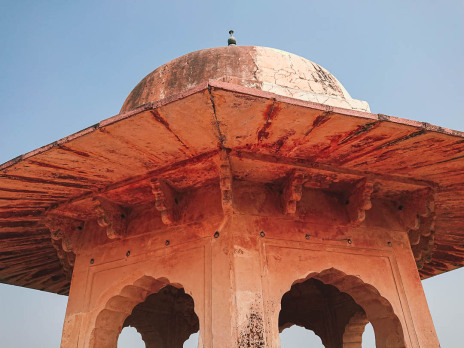
Jaigarh’s Role in Jaipur’s Tourism
Jaigarh is a major tourist attraction in Jaipur, alongside the Amer and Nahargarh Forts. In 2023, Jaipur will attract over 180 million domestic and 2 million international visitors, boosting local companies such as guides, taxis, and restaurants. Cultural events organized by the royal family's Durga Diya Enterprises bolster its economic impact, but improved facilities might increase its appeal even further.
Who Can Enjoy Jaigarh?
Families/Children: Children will like the cannon and open spaces, but exercise caution on uneven paths.
Elderly: The fort is mostly wheelchair accessible inside, but the steep entrance and extensive walking may necessitate assistance. Golf carts are unavailable, so prepare appropriately. It's a good fit for everyone, but take some care for safety and mobility.
Amber Palace
A Royal Journey Through Jaipur’s Crown Jewel
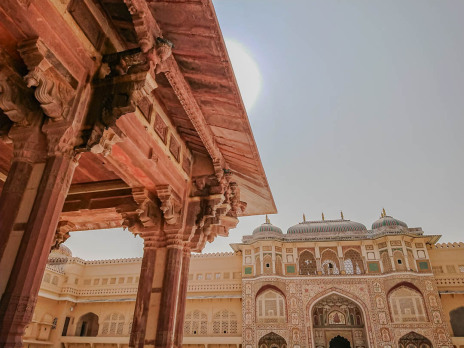
Overview
Discover Amber Palace, a breathtaking stronghold in Rajasthan's core that combines history, art, and splendor. Perched above Maota Lake, this UNESCO World Heritage Site in Jaipur, India, provides an amazing look into imperial grandeur.
Join us to discover its mysteries, learn practical advice, and see why this historic fort is regarded as a jewel of the Pink City.
How To Get There?
Amber Palace, or Amer Fort, lies 11 km northeast of Jaipur, Rajasthan, nestled in the Aravalli hills with stunning views over Maota Lake. Reach it from Jaipur International Airport (20 km, 30–40 min, ₹500–₹800 taxi) or Jaipur Junction (13 km, 20–30 min, ₹300–₹500 auto-rickshaw). Buses (₹15–₹25) take 40 minutes. At the fort, climb on foot, take a jeep (₹400–₹600), or golf cart; avoid elephant rides due to ethical concerns.
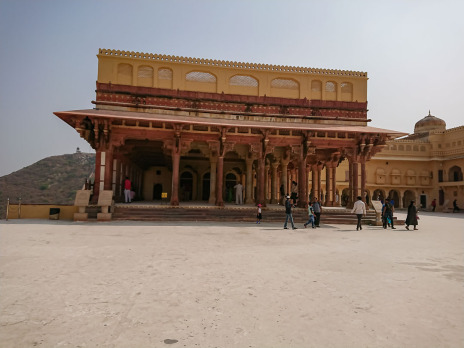
Amber Palace Legacy
Raja Man Singh I built Amber Palace in 1592, and it served as the royal residence of the Kachwaha Rajputs until 1727.
It was built on the ruins of an 11th-century fort and combines Hindu and Mughal architectural styles. It was seized from the Meena tribe and turned into a Kachwaha stronghold.
A UNESCO World Heritage Site (2013), its grandeur shines in films like Jodhaa Akbar, attracting millions.
Amber Palace Marvels
Amber Palace captivates with its combination of history, beauty, and creativity.
Highlights include the gleaming Sheesh Mahal, ornate Diwan-e-Aam and Diwan-e-Khas, water-cooled Sukh Niwas, vivid Ganesh Pol, and hidden Zanana Dyodhi. Perched on a hill, it provides spectacular views of Maota Lake and the Aravalli hills, as well as underground tunnels to Jaigarh Fort for added intrigue.
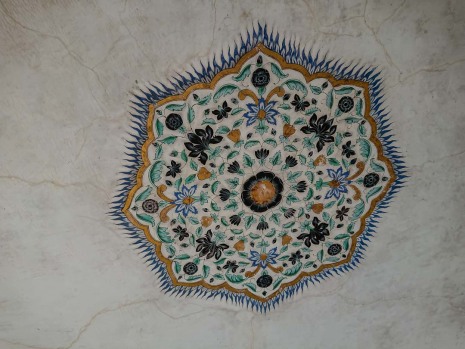
Best Time to Visit
Amber Palace is best visited between September and March when the temperature ranges between 10 and 25 degrees Celsius. Early mornings (8:00 a.m.) provide cooler temps, less crowds, and great photographic lighting.
Summers are hot (up to 40°C), and monsoon rains (July-August) make routes slippery. The nightly Light and Sound Show (6:30 PM-7:30 PM, ₹200-₹300) offers a magnificent historical experience.
The Experience of Visiting
Entering Amber Palace is like walking into a royal drama. Its huge sandstone walls and intricate marble carvings evoke awe, while Maota Lake and the distant hills provide tranquil serenity.
The Sheesh Mahal's shimmering mirrors and Zanana's hidden corridors transport you to regal times, combining strength and elegance to reveal Rajasthan's ageless character.
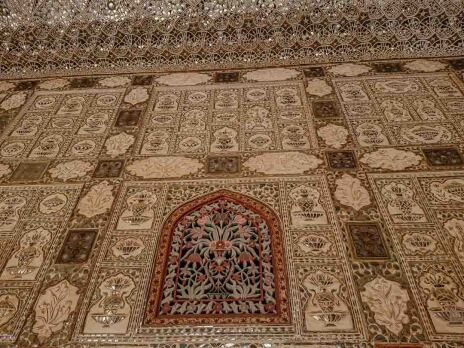
Jaigarh’s Role in Jaipur’s Tourism
Jaigarh is a major tourist attraction in Jaipur, alongside the Amer and Nahargarh Forts. In 2023, Jaipur will attract over 180 million domestic and 2 million international visitors, boosting local companies such as guides, taxis, and restaurants. Cultural events organized by the royal family's Durga Diya Enterprises bolster its economic impact, but improved facilities might increase its appeal even further.
Tips for Exploring
Wear comfortable clothes and sturdy shoes to the steep fort. Carry water to stay hydrated. Hire a guide (₹300-₹500) to gain historical insights. Respect the place by not touching the carvings.
Avoid elephant rides; instead, take a vehicle or walk. Bring your camera, but drones require permission.
Arrive early to avoid crowds, especially during peak season.
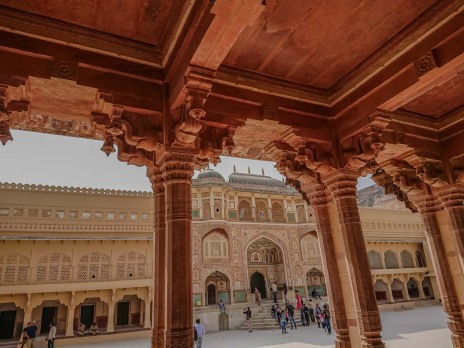
Amber Palace Surroundings
Explore the local gems around Amber Palace: Jaigarh Fort (2 miles) has the Jaivana cannon and breathtaking vistas.
Nahargarh Fort (15 kilometers) has magnificent sunsets. Panna Meena ka Kund (1 km) is stunning with its geometric stepwells.
Visit the Anokhi Museum (2 km) for textile heritage and Elephant Village (3 km) for ethical encounters. Shop for handicrafts on Amer Road.
Amber Palace's Cultural Significance
Amber Palace, previously the Kachwaha capital, represents Rajput pride and diplomacy.
Its strategic location and Mughal ties highlight Rajasthan's rich history. It preserves Rajput traditions by hosting festivals and the Light and Sound Show.
The fort's care supports local artists and guides, reinforcing its status as a lively cultural hub.
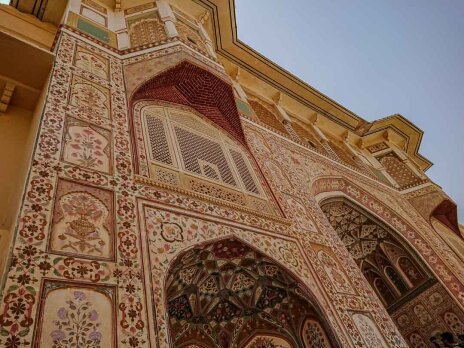
Amber Palace's UNESCO Honor
Amber Palace was designated a UNESCO World Heritage Site in 2013 as part of the "Hill Forts of Rajasthan" due to its architectural brilliance, historical significance, and Rajput cultural legacy.
Its combination of Hindu and Mughal designs, as well as innovative features such as Sukh Niwas' cooling system, cemented its status as a world-renowned masterpiece.
Tales and Legends
Legends about the Amber Palace include buried jewels and secret passageways for royal escapes.
According to one story, the Sheesh Mahal was designed for a queen to slumber under starry reflections.
Another focuses on Raja Man Singh's diplomacy, which combines Rajput heroism with Mughal relationships, as evidenced by the fort's distinctive Hindu-Mughal architecture.
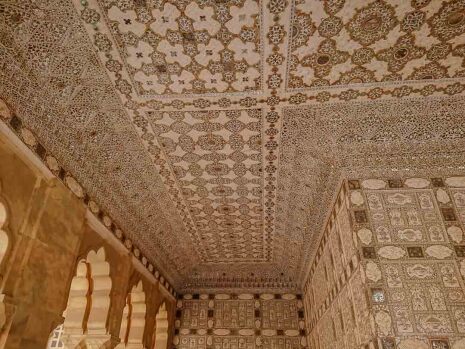
Amber Palace in Culture
The majestic magnificence of Amber Palace shines through in Bollywood, as it appears as Akbar's palace in Jodhaa Akbar (2008) and as a grand set in Bajirao Mastani (2015).
It provides inspiration for travelogues and novels about Rajasthan's aristocracy in literature.
The fort's colorful frescoes and complex mirror work continue to influence Rajasthani art and design traditions.
Cost of Visiting
Entry fees are ₹100 for Indians and ₹550 (~$6.50 USD) for foreigners, with student discounts.
Extras include audio guides (₹200), guided tours (₹300–₹500), Light and Sound Show (₹200–₹300), and jeep rides (₹400–₹600).
The fort’s stunning architecture, rich history, and breathtaking views make it a worthwhile experience, especially with a guide.
Jal Mahal
The Floating Palace of Jaipur
Location
Jal Mahal overlooks Man Sagar Lake, 8.3 kilometers from Jaipur's center on Jaipur-Amer Road, Rajasthan, 302002. You can get there in 20-30 minutes by taxi, auto-rickshaw, or automobile with plenty of parking. Buses stop 200 metres away at Shahpura Bagh. Take a taxi or bus from Jaipur Airport (18.2 km) or the Railway Station (6.9 km).
Visit in the late afternoon for magnificent sunset views.
Jal Mahal Magic
Imagine a palace floating smoothly on a shimmering lake, its red sandstone walls glowing at sunset and framed by the Aravalli hills. Jal Mahal, Jaipur's "Water Palace," combines regal history with architectural magnificence. It's a Pink City beauty and a must-see for vacationers looking for Rajasthan's regal appeal.
Learn how to make your visit unforgettable!
The Story Behind
Jal Mahal, erected about 1699 and later rebuilt by Maharaja Jai Singh II, was used as a royal duck hunting lodge.
The palace is set in Man Sagar Lake, which was created by damming the Garbhavati River in 1596. It has a terrace garden with chhatris.
Its floating aspect and regal past, which combine Rajput and Mughal forms, make it a well-known cultural landmark.
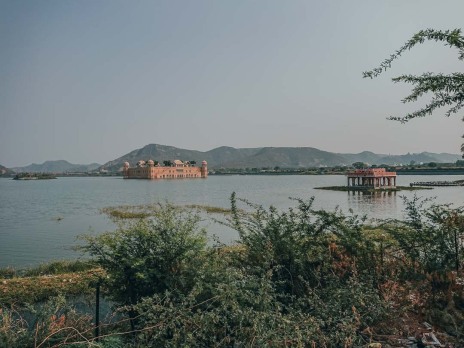
Why Jal Mahal Is a Must-See
The Taj Mahal is a visual and cultural masterpiece. Its floating illusion of four submerged stories produces a dreamy experience.
It is made of red sandstone and has a Rajput-Mughal design. Its engineering has stood the test of time for over 250 years. Framed by the Aravalli hills, it provides breathtaking views and attracts migratory birds, making it a photographer's and nature lover's dream.
Best Time to Visit
The best time to visit Jal Mahal is between October and March, when Jaipur's temperate temperature (10°C-25°C) makes exploration enjoyable.
Monsoon season (July-September) brightens the palace's colors and fills the lake, providing a magnificent view.
Visit at daybreak or sunset for the most stunning views of the castle illuminated by golden light.
Nearby Attractions and Activities
Explore top Jaipur spots near Jal Mahal:
Amer Fort (4 km):
Majestic Rajput hill fort
Nahargarh Fort:
Scenic views, wax museum
Jaigarh Fort (6.6 km):
Historic cannon, stronghold
Hawa Mahal (6.2 km):
Iconic breeze-catching palace
City Palace (4.4 km):
Regal museums, courtyards
Tips for Exploring
Jal Mahal isn’t open for interior tours, but the lakeside view is stunning.
Bring essentials like water, sunglasses, and a camera; cash is useful for nearby vendors.
Stay aware in crowds and safeguard belongings. Help keep the area clean by not littering.
For a magical experience, linger until evening to see the palace beautifully lit.
Legends and Lore
Legends surround Jal Mahal, with some claiming it was a royal lovers' refuge beneath the moonlight, while others believe the sunken floors served as private bathing chambers.
Its origin is unknown, although it could be Madho Singh I or Pratap Singh.
These persistent stories add to the palace's mystique and calm attractiveness.

